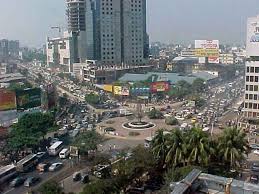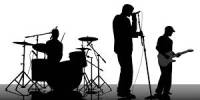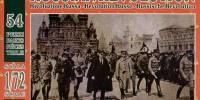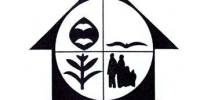History of Dhaka City:
Dhaka City formerly spelled Dacca, named Jahangirnagar during Mughal era is the capital of Bangladesh and the principal city of Dhaka Division. Dhaka is a megacity and one of the major cities of South Asia. Located on the banks of the Buriganga River, Dhaka, along with its metropolitan area, had a population of over 16 million in 2011, making it the largest city in Bangladesh. It is the 9th largest city in the world and also 28th among the most densely populated cities in the world. Dhaka is known as the City of Mosques and with 400,000 cycle rickshaws running on its streets every day, the city is also described as the Rickshaw Capital of the World.
Under Mughal rule in the 17th century, the city was known as Jahangir Nagar. It was a provincial capital and a centre of the worldwide muslin trade. The modern city, however, was developed chiefly under British rule in the 19th century, and became the second-largest city in Bengal after Calcutta (presently Kolkata). After the Partition of Bengal in 1905, Dhaka became the capital of the new province of Eastern Bengal and Assam but lost its status as a provincial capital again after the partition was annulled in 1911. After the partition of India in 1947, Dhaka became the administrative capital of East Pakistan, and later, in 1971, the capital of an independent Bangladesh. During the intervening period, the city witnessed widespread turmoil; this included many impositions of martial law, the declaration of Bangladesh’s independence, military suppression, devastation during war, and natural calamities. Modern Dhaka is the centre of political, cultural and economic life in Bangladesh. Although its urban infrastructure is the most developed in the country, Dhaka suffers from urban problems such as pollution and overpopulation. In recent decades, Dhaka has seen modernisation of transport, communications and public works. The city is attracting large foreign investments and greater volumes of commerce and trade. It is also experiencing an increasing influx of people from across the nation, this has reportedly made Dhaka the fastest growing city in the world. Lalbabh Fort constructed in the mid 17th century by Prince Mohammed Azam Shah, son of the Emperor Aurangzeb, and the Fort contains the tomb of Bibi Pari, daughter of Shaista Khan. The existence of a settlement in the area that is now Dhaka dates from the 7th century. The city area was ruled by the Buddhist kingdom of Kamarupa and the Pala Empire before passing to the control of the Hindu Sena dynasty in the 9th century. The name of the city may have derived after the establishment of the Goddess Dhakeshwari’s temple by Ballal Sena in the 12th century. The town itself consisted of a few market centres like Lakshmi Bazar, Shankhari Bazar, Tanti Bazar, Patuatuli, Kumartuli, Bania Nagar and Goal Nagar.
After the Sena Empire, Dhaka was successively ruled by the Sultanate of Bengal as well as interruption of governors from the Delhi Sultanate before being taken over by the Mughals in 1608. The development of townships and housing has resulted into a significant growth in population came as the city was proclaimed the capital (Rajmahal) of Bengal under Mughal rule in 1608. Mughal subahdar Islam Khan was the first administrator of the city. Khan named the town “Jahangir Nagar” (জাহাঙ্গীর নগর; City of Jahangir) in honour of the Mughal emperor Jahangir, although this name was dropped soon after Jahangir’s death. The main expansion of the city took place under Mughal general Shaista Khan. The city then measured 19 by 13 kilometres (12 by 8 mi), with a population of nearly one million people.British East India Company in 1765 gained right to collect revenue (Diwani right) and later took over governing in 1793 when Nawabs of Bengal were forced to abdicate all their authority over Bengal, Bihar & Orissa & the city passed on to total British control. The city’s population shrank dramatically during this period as the prominence of Calcutta rose, but substantive development and modernisation eventually followed. A modern civic water supply system was introduced in 1874 and electricity supply launched in 1878.The Dhaka Cantonment was established near the city, serving as a base for British and Bengali soldiers. Ahsan Manzil,was once the palace of the Dhaka Nawab Family; it is now a museum. Bastion of the Lal Bagh, Dacca – 1816. During the abortive Partition of Bengal in 1905, Dhaka was declared to be the capital of the newly established state of East Bengal and Assam, but Bengal was reunited in 1911. Following the Partition of India in 1947, Dhaka became the capital of East Pakistan. The city witnessed major communal violence following the partition of India. A large proportion of the city’s Hindu population departed for India, while the city received a large influx of Muslims. As the centre of regional politics, however, Dhaka saw an increasing number of political strikes and incidents of violence. The adoption of Urdu as the sole official language of Pakistan led to protest marches involving large crowds. Known as the Bengali Language Movement, the protests resulted in Pakistani police firing which killed a number of peaceful student demonstrators. Throughout the 1950s and 1960s, Dhaka remained a hotbed of political activity, and the demands for autonomy for the Bengali population gradually gained momentum. Jatiyo Sangshad Bhaban houses the national parliament.
The 1970 Bhola cyclone devastated much of the region, killing an estimated 500,000 people. More than half the city was flooded and millions of people were marooned. With public anger growing against ethnic discrimination and poor cyclone relief efforts from the central government, Bengali politician Bangabandhu Sheikh Mujibur Rahman held a nationalist gathering on March 7, 1971 at Ramna Racecourse. An estimated one million people attended the gathering, leading to the March 26 declaration of Bangladesh’s independence. In response, the Pakistan Army launched Operation Searchlight, which led to the arrests, torture and killing of thousands of people. After nine months of bloody battle with Indian Army and Mitra Bahini, the Pakistani Army surrendered to the Indian Army on December 16 marking the end of the independence war of Bangladesh. As the nation’s capital, Dhaka saw a rapid and huge growth of the city population in the post-independence period, as migrant workers from rural areas across Bangladesh moved to the city. The growth of commerce and industry along with the city’s population has created further challenges to services and infrastructure. A real estate boom has followed the expansion of city limits and the development of new settlements such as Uttara, Mohammadpur, Bashundhara, Mirpur and Motijheel.
Geography
Dhaka is located in central Bangladesh at 23°42′0″N 90°22′30″E, on the eastern banks of the Buriganga River. The city lies on the lower reaches of the Ganges Delta and covers a total area of 360 square kilometres (140 sq mi). It consists of eight principal thanas –Lalbagh, Kotwali, Sutrapur, Ramna, Motijheel, Paltan, Dhanmondi, Mohammadpur, Tejgaon – and 16 auxiliary thanas – Gulshan, Mirpur, Pallabi, Shah Ali, Turaag, Sabujbagh, Dhaka Cantonment, Demra, Hazaribagh, Shyampur, Badda, Kafrul, Kamrangir char, Khilgaon and Uttara. In total the city has 130 wards and 725 mohallas. Dhaka district has an area of 1463.60 square kilometres (565 sq mi); and is bounded by the districts of Gazipur, Tangail, Munshiganj, Rajbari, Narayanganj, Manikganj. Tropical vegetation and moist soils characterize the land, which is flat and close to sea level. This leaves Dhaka susceptible to flooding during the monsoon seasons owing to heavy rainfall and cyclones.
Climate
Dhaka experiences a hot, wet and humid tropical climate. Under the Köppen climate classification, Dhaka has a tropical savanna climate. The city has a distinct monsoonal season, with an annual average temperature of 27 °C (81 °F) and monthly means varying between 19.5 °C (67 °F) in January and 32 °C (90 °F) in May. Approximately 87% of the annual average rainfall of 2,123 millimeters (83.5 in) occurs between May and October. Increasing air and water pollution emanating from traffic congestion and industrial waste are serious problems affecting public health and the quality of life in the city. Water bodies and wetlands around Dhaka are facing destruction as these are being filled up to construct multi-storied buildings and other real estate developments. Coupled with pollution, such erosion of natural habitats threatens to destroy much of the regional biodiversity.
Civic Administration
The Dhaka municipality was founded on August 1, 1864, and upgraded to “corporation” status in 1978. The Dhaka City Corporation is a self-governing corporation which runs the affairs of the city.Recently Dhaka City Corporation has been divided in two administrative part thease are 1)Dhaka City Corporation-North and 2)Dhaka City Corporation-South for ensuring better civic facilities. The incorporated area is divided into several wards, which have elected commissioners. presently These Two corporations are headed by two administrators. The Dhaka Education Board is responsible for administering all public schools and most private schools with the exception of English-medium schools and madrassahs. All madrassahs in Bangladesh are governed by a central board while English-medium schools are under separate educational and governance structures.
The Dhaka Metropolitan Police (DMP) was established in 1976 and has 6,000 personnel in 12 police stations.[40] With the rapid population growth of the city, the force has been raised to 23,000 personnel and the establishment of 33 police stations has been completed and the creation of another 18 police stations is underway.
The city is divided into 25 (i.e. 2011) parliamentary constituencies. The two main political parties are the Awami League and the Bangladesh Nationalist Party. Ramna contains the Secretariat, which houses most of the government ministries. The Supreme Court of Bangladesh and the Dhaka High Court are located in the city. The Bangabhaban palace has served as the official residence of the Viceroy of India, the governor of East Pakistan and presently the President of Bangladesh. The Jatiyo Sangshad Bhaban, designed by renowned architect Louis Kahn, houses the unicameral national parliament. The Baitul Mukarram, developed with a design resembling the Kaaba of Mecca, is the national mosque. Other historical monuments in the city include the Bara Katra palace, the Lalbagh Fort, the Hoseni Dalan and the Ahsan Manzil.
To fight rising traffic congestion and population, the national government has recently implemented a policy for rapid urbanization of surrounding areas and beyond by the introduction of a ten year holiday on income tax for new construction of facilities and buildings outside Dhaka.
Aside from Chittagong, Dhaka has a water-borne sewage system, but this serves only 25% of the population while another 30% are served with septic tanks. Only two-thirds of households in Dhaka are served by the city water supply system. More than 9.7 million tons of solid wastes are produced in Dhaka city each year. While private and government efforts have succeeded in collecting refuse city-wide and using it as manure, most solid wastes are often dumped untreated in nearby low-lying areas and water bodies.
Demographics
The population of Dhaka (areas under the jurisdiction of the Dhaka city corporation) stands at approximately 7.0 million. The city, in combination with localities forming the wider metropolitan area, is home to an estimated 16.6 million as of 2011. The population is growing by an estimated 4.2% per year, one of the highest rates amongst Asian cities. The continuing growth reflects ongoing migration from rural areas to the Dhaka urban region, which accounted for 60% of the city’s growth in the 1960s and 1970s. More recently, the city’s population has also grown with the expansion of city boundaries, a process that added more than a million people to the city in the 1980s. According to Far Eastern Economic Review, Dhaka will become a home of 25 million people by the year 2025.
The literacy rate in Dhaka is also increasing fairly quickly. It was estimated at 62.3% in 2001. By 2010, the literacy rate had gone up to 72.7%, significantly higher than the national average of 56.5%.
The city population is composed of people from virtually every region of Bangladesh. The long-standing inhabitants of the old city are known as Dhakaia and have a distinctive dialect and culture. Between 15,000 to 20,000 of the Rohingya, Santal, Khasi, Garo, Chakma and Mandi tribal peoples reside in the city. Dhaka also has a large population of Chinese, Korean, Indian, Burmese and Nepali expatriates working in executive jobs in different industries.
Most residents of Dhaka speak Bengali, the national language. Many distinctive Bengali dialects and regional languages such as Chittagonian and Sylheti are also spoken by segments of the population. English is spoken by a large segment of the population, especially for business purposes. There is a minority Urdu-speaking population, who are descendants of displaced Muslims from eastern India during 1947 and sought refuge in East Pakistan. The correct population is ambiguous; although official figures estimate at least 40,000 residents, it is estimated that there are at least 300,000 Urdu-speakers in all of Bangladesh, mostly residing in refugee camps in Dhaka.
Islam is the dominant religion of Dhaka’s people, of about 90% of the city practicing the faith; with a majority belonging to the Sunni sect. There is also a small Shia sect, and an Ahmadiya community. Hinduism is the second-largest religion, with about 9%, and smaller communities practice Buddhism and Christianity, both of about .5% each.
It is the National Authoritative Board on building planning, estates and resources, plot allotment and construction approvals from both public and private entities. It utilizes the Dhaka Improvement Trust (Allotment of Land) Rule of 1969 and The Town Improvement Act of 1953, both scribed since before the Independence of Bangladesh.
















